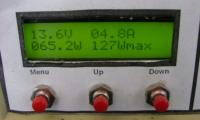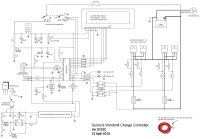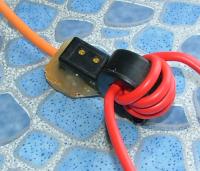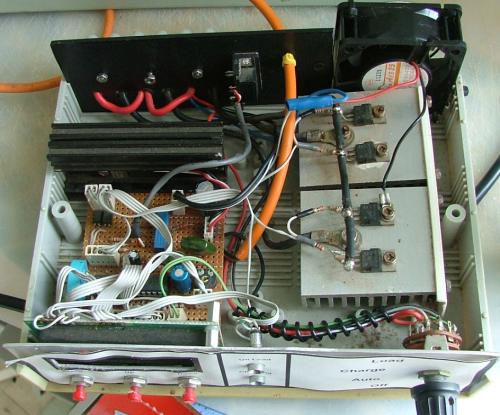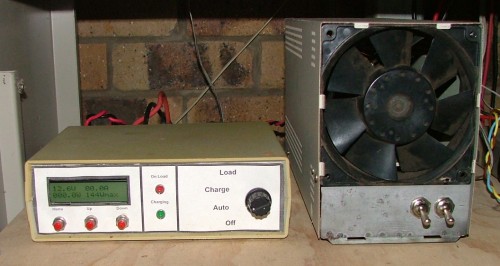The original charger described on the previous page has worked faithfully for the last few years.
Recently I needed to set up a controller at a friends place to monitor a prototype windmill. I wanted to use my trusty old Picaxe controller, and decided to rewrite the software to add a few functions.
First up I modified the circuit to run as a dump controller instead of a bypass controller. This meant a few minor changes to the circuit, basically just reconnecting the terminals at the back of the unit. And I changed the MOSFET gate drive resistors to a lower value, 22ohm for the drive and 15k as the pull up resistor. This should mean the MOSFETs will run cooler.
I also fitted a new display panel. Its a LCD from a old 17inch monitor I scrapped recently, 20X2 characters and has a nice green back light.
Recently I scorred some nice current transducers, so used one to monitor the battery amps instead of my home made transducer.
I also added a fan to the back of the case. The fan is connected across one of the outputs, so cuts in when its needed most to cool the mosfets. I dont think the fan is needed, the mosfets dont get that hot, but I figured it wouldn't hurt to blow some cool air around the case. Its a dump controller anyway, so might as well dump some power into a fan.
And lastly I fitted the 7805 regulator to a big heat sink, it was running HOT!
The new software code is very different to the old code, its almost a complete rewrite. The big difference is the use of peeks and pokes to free up variables. To calculate watts I needed to use WORDS ( 0-65536 ) instead of BYTES ( 0-256 ), so I had to free up as much variable space as possible. By use pokes and peeks as temporary storage, I could free up the WORD variables for the math functions.
The software was changed to provide the following features. |


